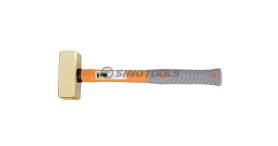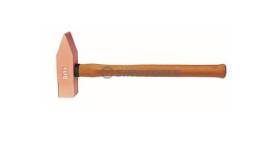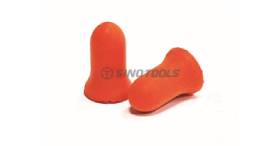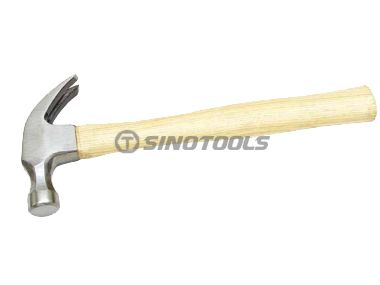China hand tools supplier to share with you: Explosion-proof tools are a special tool, made of copper-based multi-element non-ferrous metals in the material, and some explosion-proof tools are specially designed. Therefore, there are requirements for the use, maintenance, storage and transportation of china non-sparking tool. Only by fully understanding, selecting and using explosion-proof tools properly, can we give full play to the various performance advantages of explosion-proof tools.
Explosion-proof hand tools have different strengths. Explosion-proof sleeves are strictly forbidden from being overloaded. Tools other than knocking wrenches must not be struck, otherwise, it will cause fracture and deformation due to overload and affect normal use. When using explosion-proof hand tools, you should jointly select their variety and specifications according to your needs. They must not be large and must not be used as steel tools. It should be noted that when using adjustable wrenches, pipe wrenches, and stay wrenches, it is necessary to Pay attention to the requirements of the direction of the force. Do not make any knob. When using a tool with a blade, first determine the hardness of the workpiece. It is prohibited to use it when its hardness is higher than the hardness of the tool. When the workpiece is tightened by motor, fixed or corroded, and no other measures are taken before using explosion-proof hand tools, it should be prohibited to avoid damage to the tool. Explosion-proof hand tools include explosion-proof adjustable wrenches, explosion-proof pipe wrenches, explosion-proof copper hammers, explosion-proof plum wrenches, explosion-proof open-end wrenches, explosion-proof fire axes, explosion-proof cymbals, and so on.

China Non-Sparking Tool
Explosion-proof pipe wrenches in explosion-proof tools are also one of the commonly used tools. The process before the explosion-proof tools (explosion-proof pipe wrenches) uses the process of casting, polishing, and then painting. However, some customers will say that I do n’t want to paint, I want the original copper color. The original copper color requires that our explosion-proof tools have good surface treatment, and there can be no potholes. What should we do? After repeated by our technicians, the original copper color of the explosion-proof tools now adopts new production technology frosting process. Frosting refers to the process of grinding our explosion-proof tools with abrasives and using machinery to make the surface of the explosion-proof tools show a series of uniform rough surfaces. The bright surface formed by polishing our explosion-proof tools before is frosty and generous. metallic feel. Glossy and stylish.
The nature of explosion-proof tools in the field of prevention is very important. Explosion-proof tools are the key to facilities. Therefore, the key performance of explosion-proof tools must be guaranteed.
The surface of the explosion-proof tool is bright after polishing. The active metal molecules on the surface are exposed to the air and oxidize and turn black quickly, and then rust. Therefore, the explosion-proof tool is degreased and dehydrated before light finishing. Both are indispensable. Store explosion-proof tools in a dry place so that parts of the explosion-proof tools are not damaged. In our daily work, the surface attachments of explosion-proof tools should be treated after continuous tapping for 20 times. Wipe clean before using, do not use continuously, so as to prevent the tool from being heated due to long-term friction, which may cause damage Our explosion-proof tools wipe off dirt and deposits on the surface after use. Explosion-proof tools such as wrenches should not be used with excessive force. Do not use sleeves or tie other metal rods to extend the arm, or use a hammer to knock the knob fasteners. Blade-type explosion-proof tools are placed in the water tank to lightly touch the grinding wheel for sharpening. Do not use excessive force and contact the grinding wheel for too long. In the operation of explosion-proof tools, such as debris and oxides on the working surface, to prevent the impact of a third party.


